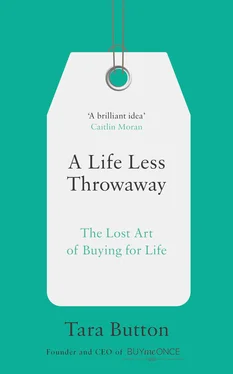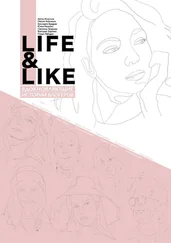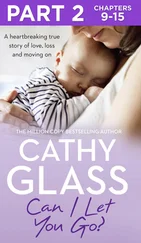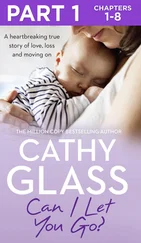It took time for us to get used to the idea of recycling and it will take us a while to get into the swing of repairing and reusing. But if governments and reuse companies make it easy and promote the benefits, then there’s no reason why it shouldn’t become completely natural to send products off to the repair yard instead of to the junkyard. ( For more on repairing, see Chapter 14 and Appendix I. )
Read on
I believe that psychological obsolescence is even more insidious and dangerous than physical obsolescence, because with the right messaging, marketers can get into your head and make you dislike the things that you liked perfectly well when you bought them. So read on. Many of the chapters in this book are focused on helping you deal with the lure of psychological obsolescence:
• Chapters 4and 5explore advertising and marketing. You will learn how to combat these messages and buy things on your own terms.
• Chapters 6 and 7 will talk you through how to discover your own clothing style and step off the trend treadmill.
• Chapter 9 will help you discover your inner purpose so that whatever you buy nourishes the important goals in your life.
• Chapters 11 to 15 will give you the practical advice you need while you’re out shopping and once you have the products in your life.
We’ll start with advertising – the fuel that makes obsolescence run.
4

Advertising
or
How many people does it take to sell a lightbulb?
According to Fifties industrial designer Brooks Stevens, advertising exists to give people ‘the desire to own something a little newer, a little better, a little sooner than necessary’. 1Although it’s hard to imagine now, we are not naturally rampant consumers. Marketers had to pump this drug of desire into us.
Drawing on my decade working in advertising, this chapter will give you a peek behind the curtain to show you how the Wizards of Ads bamboozle us into spending money we may not have on things we may not really want.
BEHIND THE ADVERTISING CURTAIN
It was a bright day outside, but you’d never have known it. I was sitting on one of several black fake-leather couches in a vast dark warehouse. The only lights were at the back of the room where the car was waiting for its close-up.
Looking at the scores of stressed-out and scurrying people who had been working on this project for countless days, it suddenly hit me just how bonkers my job really was. If you’re not familiar with how the ad industry works, this is what happens. Brace yourselves.
The car company decides to advertise their car and hires an agency. The ‘planners’ at the agency then do exhaustive research into the aptly named ‘target market’, delving deep into the details of how we think, feel and behave.
Occasionally brands want to change their audience or how people feel about their product, so they change their advertising, which is cheaper and easier than changing the actual product. We might think that we’re too savvy to be swayed by ad strategies, but this is sadly not the case. For example, when my old agency started telling parents that a certain chocolate spread brand was not just a treat but could be a ‘part of a healthy breakfast’, sales doubled. (The morality of employing a strategy like this tends to be ignored.)
Once the planners have a strategy, they hand it over to the ‘creatives’. In the case of this car ad, that was me. The strategy was to get people to see the car as a fashion item – I guess like a snazzy handbag that you drive to your granny in. Together with my creative partner and creative director, I spent weeks coming up with dozens of ways to turn this strategy into a poster concept.
Then things got practical. I auditioned over fifty models, looking them up and down to decide whether they had the ‘right look’ to make people want to buy a three-door hatchback. Incidentally, having to judge someone else’s appearance isn’t a comfortable or life-affirming activity. It manages to make you feel disconnected from your humanity, creepy and fat all at the same time. Despite my final choice being a size 6 (US size 2), the client who sat beside me on the black sofas confided that she was worried the model might be ‘too chubby’.
Finalising the outfit for this not-at-all-chubby woman then took several weeks of deliberation, research into the target audience and late-night fittings. What did we end up with? Cropped trousers, plimsolls and a layered T-shirt. A simple enough look you might think, but every detail had been debated and signed off by multiple people.
Then it was up to the clothes stylists, hair and make-up stylists, lighting directors, photographers and all their many assistants to ensure that both car and model looked ab-sol-ute-ly perfect. We all had one last passionate debate with the client about the shoes the model was wearing and then the photographs began. They flashed up onto a big computer screen where we could examine them, and more minute adjustments were made. Several hours later, we wrapped, congratulated ourselves and went back to the office to pick our final picture.
Once there, however, none of the shots were considered ‘just right’, so we ended up expertly knitting three different photographs together in Photoshop. Later, the retouch artists began the work of making both the perfect-looking car and the perfect-looking person (who had already been rigorously perfected) look more perfect.
A month later, the poster was finished. It looked, unsurprisingly, rather perfect. It went up on billboards all over the UK and the whole campaign was considered a success.
Why am I telling you this? It’s not to relive my ‘glory days’ in advertising, I promise. It’s to show the strategising and conscious effort behind every tiny detail to create an advert that’s as seductive as possible.
Ads like this are designed to weave a fantasy world around the product and (at a subliminal level) make us want to be, or be with, the people in them. They seduce us by getting bits of our brain that we’re not even aware of to think, ‘I want to look like that. I want to feel like that. I want that life.’ But the truth is that it’s a very cleverly constructed lie. No one looks like that, not even the models in the ads. To look like that, you’d have to pay the 50 or so people at that shoot to construct every split-second of your life and somehow Photoshop you as you walked along the street.
That day, in that room, I had a moment of clarity. Of all the things to spend your life doing, rush around for, lose sleep over, spend hundreds of thousands of pounds on, why advertising ? What even is this?
WHAT EVEN IS THIS? A VERY BRIEF HISTORY OF ADVERTISING
At first advertising was simply a means of sharing information. One of the first written adverts we know of was created 5,500 years ago by a Babylonian chap who inscribed into a clay tablet what cattle and feed his master had for sale and what the prices were. It probably made for dull reading, with no catchy end-line or joke to make the buyers feel better about the prices.
Times moved on. Before the printing press was invented in the 1400s, town criers gave out the news, sometimes accompanied by a musician, so the first advertising jingle was probably played on a lute! During the 1700s and 1800s, paper ‘bill’ ads were plastered on every public wall available, including cathedrals. These ads became increasingly eye-catching, with varied graphics, fonts and etchings. They showed everything from elaborately dressed women keeping themselves clean with Pears Soap to boastful bulletins informing people of a recently arrived cargo ship full of ‘138 Remarkably Healthy Slaves’.
Читать дальше













